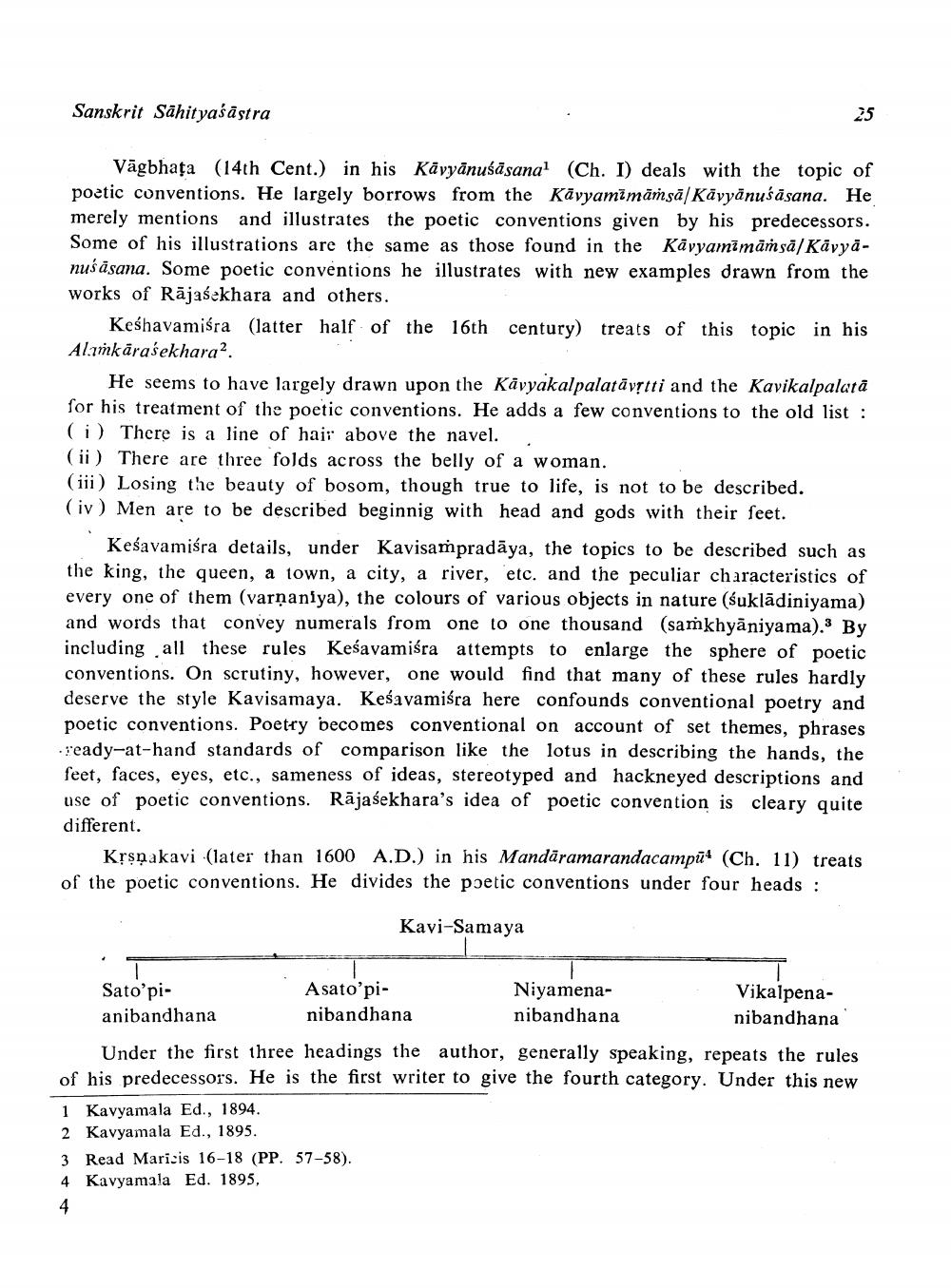________________
Sanskrit Sahityaśāstra
Vägbhața (14th Cent.) in his Kāyyānuśāsanal (Ch. I) deals with the topic of poetic conventions. He largely borrows from the Kävyamīmāṁsā Kāvyānuśāsana. He merely mentions and illustrates the poetic conventions given by his predecessors. Some of his illustrations are the same as those found in the Kávyamīmāṁsā/ Kävyānušāsana. Some poetic conventions he illustrates with new examples drawn from the works of Rājasekhara and others.
Keshavamiśra (latter half of the 16th century) treats of this topic in his Alumkārasekhara?.
He seems to have largely drawn upon the Kävyakalpalatāvștti and the Kavikalpalatā for his treatment of the poetic conventions. He adds a few conventions to the old list : (i) There is a line of hair above the navel. (ii) There are three folds across the belly of a woman. (iii) Losing the beauty of bosom, though true to life, is not to be described. (iv) Men are to be described beginnig with head and gods with their feet.
Keśavamiśra details, under Kavisampradāya, the topics to be described such as the king, the queen, a town, a city, a river, etc. and the peculiar characteristics of every one of them (varṇaniya), the colours of various objects in nature (śuklādiniyama) and words that convey numerals from one to one thousand (samkhyāniyama).3 By including all these rules Keśavamiśra attempts to enlarge the sphere of poetic conventions. On scrutiny, however, one would find that many of these rules hardly deserve the style Kavisamaya. Keśavamiśra here confounds conventional poetry and poetic conventions. Poetry becomes conventional on account of set themes, phrases ready-at-hand standards of comparison like the lotus in describing the hands, the feet, faces, eyes, etc., sameness of ideas, stereotyped and hackneyed descriptions and use of poetic conventions. Rājasekhara's idea of poetic convention is cleary quite different.
Krsņakavi (later than 1600 A.D.) in his Mandāramarandacampū4 (Ch. 11) treats of the poetic conventions. He divides the poetic conventions under four heads :
Kavi-Samaya
Sato'piAsato'piNiyamena
Vikalpenaanibandhana nibandhana nibandhana
nibandhana Under the first three headings the author, generally speaking, repeats the rules of his predecessors. He is the first writer to give the fourth category. Under this new
1 Kavyamala Ed., 1894. 2 Kavyamala Ed., 1895. 3 Read Marisis 16-18 (PP. 57-58). 4 Kavyamala Ed. 1895.




